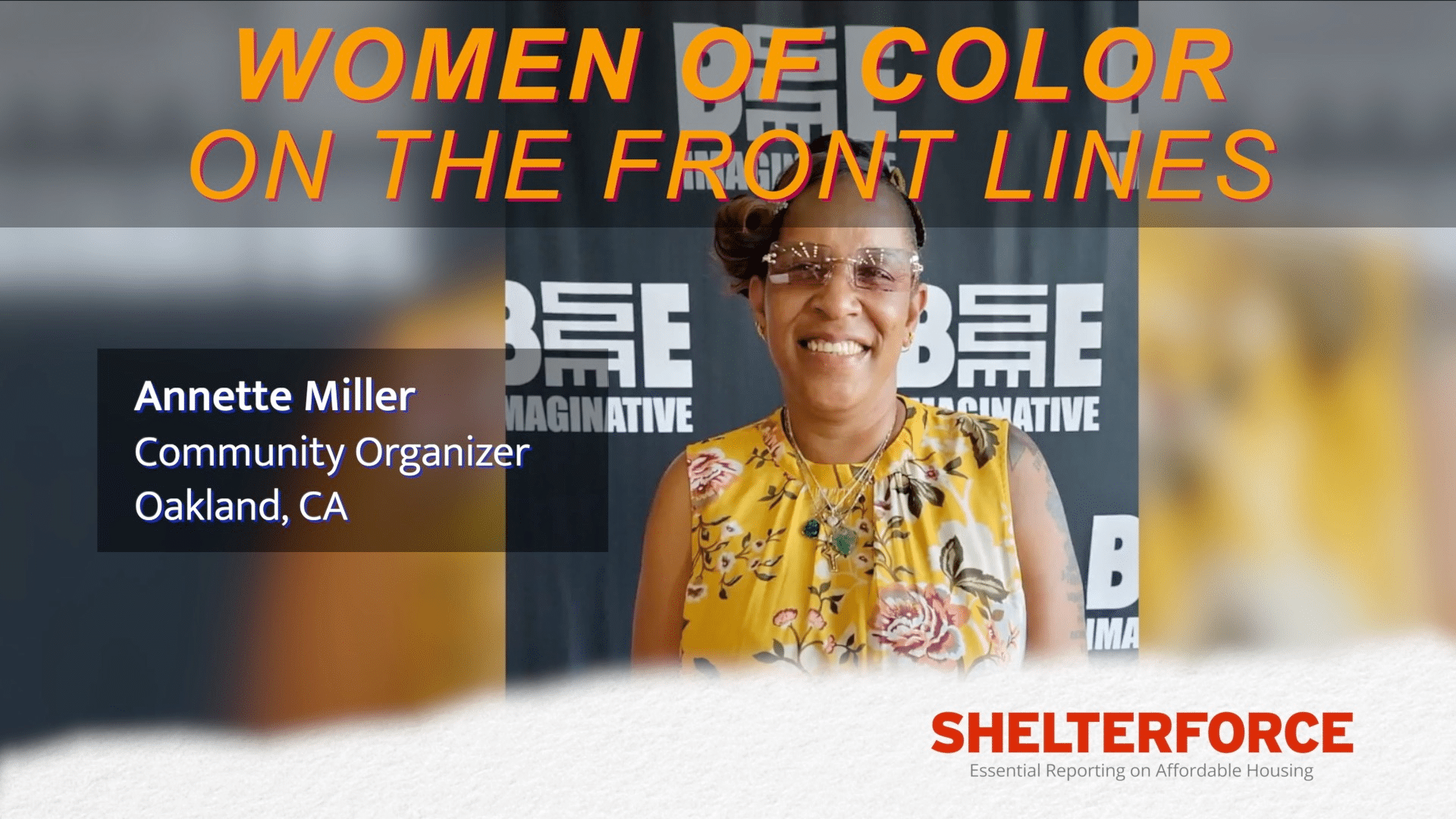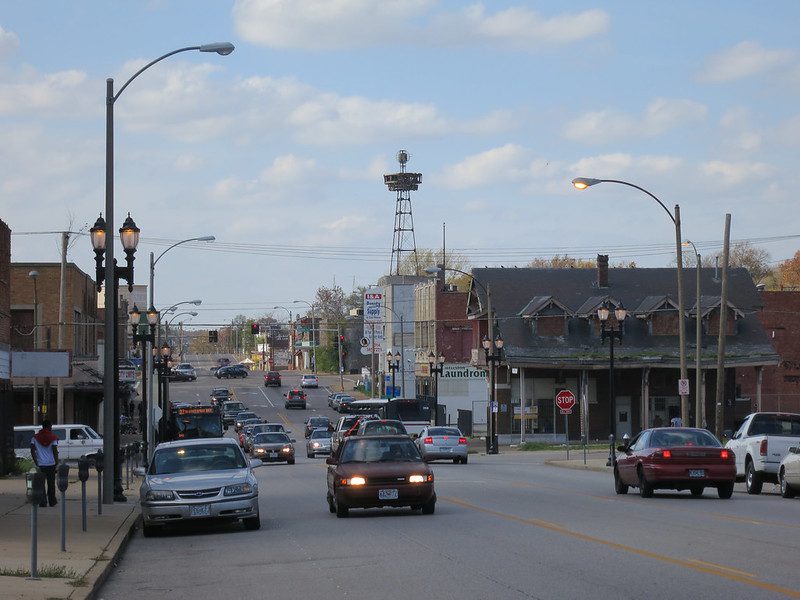
We have expanded over the years, as many of those same people have moved into deploying the resources they fought for, and have moved to looking at the intersections of all the different factors that relate to empower or disempower low-income people and to create places that tend to be healthy, empowering places to live, or not.
These things are great. But periodically, we all need to be reminded that this was a movement started to acheive justice, not to extend charity or moralizing, and having had that reminder, to reexamine our programs and our philosophies for drift.
Recently I have read two searing articles that I think everyone who works in the field should read, closely, and really sit with.
One is “Resilience Is Futile: How Well-Meaning Nonprofits Perpetuate Poverty“ by Melissa Chadburn, which talks about the trend toward examining and trying to improve poor people’s “resilience” in the face of challenges that are structural and political.
What the resilience preachers look for is a person to be unchanged in the face of trauma. But I would argue that this is impossible, that people are always changed by trauma, and furthermore, that we ought to be. Rather than shift ourselves to change what is, the foundations that fund these initiatives would be better off addressing the gaps, filling the lacks, changing what isn’t.
Chadburn shows, using her own experience, both growing up poor and working at a nonprofit taking this approach, the absurdity of assuming that the problem is that people who are being screwed are not resilient enough.
There is, for sure, value in understanding trauma and how to work with and support trauma-survivors (I think this project is pretty good on that), and in recognizing how many traumas poverty deals out. But by slipping into making a certain kind of resilience, as opposed to reducing the causes of poverty and trauma, the goal becomes a serious problem.
The other article, even closer to home for many of our readers, is Maya Dukmasova’s stirring argument that we need to ditch the term “concentrated poverty” because it puts the blame for the problems in poor areas on the presence of many poor people themselves, rather than on the forces that isolate people there and deprive them of public amenities and opportunities:
Rather than untangling the complicated causes of concentrated poverty, the liberal establishment blames concentrated poverty for the poor educational attainment of children and deficient child-rearing practices of adults. But this is a dangerous conceptual trend, because it validates the idea that wealth and power go hand in hand and that poverty, not an array of structural problems, is to blame for the disadvantages of being poor.
Dukmasova isn’t denying the reality that places exist where poverty is highly concentrated, or that being trapped in those places has negative effects, but notes:
This useful shorthand cuts off the conceptual blood supply between cause and effect. When we blame “concentrated poverty” for the diminished quality of life in minority neighborhoods, we are confusing that which creates poverty (namely racist policies and practices) and the conditions created by it.
Such fetishizing of the deconcentration of poverty, as opposed to fixing the structural problems that cause it, lead to brain-bending arguments, like that of David Brooks post Katrina, who Dukmasova notes, “concludes that it was a blessing for poor black residents of New Orleans to lose their homes. This way they couldn’t come back and live their collective pathologies together again.”
Here’s a confession: as an editor, as sympathetic as I am to Dukmasova’s point, if I banned the term “concentrated poverty” from our pages at this historical moment, I think the number of items I could publish would plummet precipitiously. Of course we publish a variety of perspectives, not just mine, so I’m generally not in the business of banning terms anyway, but it is startlingly common, and I think the least I can do is ask everyone who uses it to pause and consider the context and implications.
As our recent back and forth over Peter Dreier’s call to focus more on big picture economic organizing shows, there’s no simple one answer—place-based work, desegregation (which in my mind carries a world of different implications from “deconcentration”), and economic justice organizing need to all be coordinated. But if we are not falling to patronizing charity work, our “theory of change,” if you will, needs to be firmly, firmly grounded in the perspectives of structural change, justice, and access to resources.
(Photo credit: Flickr user Alan Sheffield, CC BY 2.0)






I agree that terms like “deconcentration” or “breaking up concentrations of poverty,” as it has come to be used, misses the point and can be stigmatizing. That is one reason I prefer the term “segregation” to “concentration of poverty.” Segregation is what causes poor people of color to become highly concentrated in black and Latino neighborhoods. Use of the term “segregation” calls for challenging exclusion, separate and unequal, and other forms of structural racism.
I disagree that Dukmasova’s piece in Slate is anything more than tired old rhetoric. She misses the boat in describing concerns about the concentrated poverty caused by segregation as being “cultural.” Nor is it about blaming the poor or deconcentrating people. Before it was co-opted by the affordable housing industry for programs like HOPE VI and twisted by leftist academics, “deconcentration” originally meant reversing the decades long policy of restricting public/assisted housing to African American neighborhoods, causing them to become areas of “concentrated poverty.” It did not mean involuntarily relocating people — as occurs in housing revitalization projects. Rather, it signified that when housing is created in a broad range of neighborhoods, people will have a real choice and can make their own decisions about what is best for their family.
Dukmasova also falls into rhetoric and completely misunderstands (or deliberately miscontrues?) anti-segregation strategies like housing mobility. Housing mobility challenges exclusion — one of the linchpins of structural racism —- head on. And contrary to her assertions, the vast majority of civil rights and mobility advocates have also been in the forefront of challenging other aspects of structural racism in the way school finance, criminal justice, predatory lending, etc. harm poor neighborhoods and the people who live in them.
Finally, lets stop sugarcoating it: the evidence is conclusive that the stress and deprivation that comes with growing up in concentrated poverty —- which rarely happens to white children —- is damaging to their development, lifelong health and economic prospects. We can either challenge the sense of inevitability that poor black kids must suffer that double jeopardy or we are complicit in accepting it.
Finally the sleeper is stirring.
I appreciate the line of thought in this article, and yet somewhat agree with Barbara Samuels. What always makes this so confusing is that we swing back and forth between structural discussions and impact discussions on the individual—and try to pretend that the two reconcile. They don’t. The Right want to believe that everything comes down to individual effort, and the Left, I think rightfully, argue that structures need to change first. But engineering new structures doesn’t guarantee engineering new individuals. And should engineering new, dynamic, emerging-from-poverty people be the goal anyway?
I’ve always wondered what things would look like if we could just focus on making the lives of poor individuals stable. Housing mobility attempts this. But why do people have to move out of their neighborhoods? This is where the issue of “concentrated poverty” arises. It is actually more cost effective to move people to middle class neighborhoods than to bring poor communities up to middle class standards because the investment in the physical attributes of the middle class community have already been made. It is one of the privileges of being middle class to have governments actually invest in your neighborhood. But that suggests a long term strategy that moves everyone out of an area of concentrated poverty (ACP) into a middle class community, that then raises the ACP to the ground and rebuilds it as a middle class community. Is this the only way to achieve that end? If the investment is going to be made in rebuilding the community, why not rebuild it now?
“And should engineering new, dynamic, emerging-from-poverty people be the goal anyway?” Good question.
I’m curious Paul, about your assertion about cost effectiveness and what sort of numbers you have for that. It makes sense to me that moving a few families out is going to be more cost effective that trying to improve the quality of life in an entire distressed area for those few people; mobility programs do a great thing for those people. But if we are talking about all the people living in a distressed area, does that assertion hold up? (It might, I don’t know. But it seems geographically implausible that we can move everyone out—and not everyone wants to move.)
I think nearly everyone agrees that both approaches are needed–the concern is about how to make them fit together in policies that uphold both at every turn, and fully support both with sufficient resources. I think my concern, and where I agreed with Maya, is that the language that’s used often implies a set of assumptions that are dangerous to the whole endeavor. After all, if we allow the assumption that too many poor people/people of color in one place are automatically disastrous in an irrecoverable way to grow, that will hamper mobility efforts too as it gives ammunition to exclusionary middle communities who won’t want more than a tiny tiny number of people moving in. Whether that is what “deconcentration” originally meant or not, it is sure the sense that it evokes.
So I agree with Barbara that segregation is a much better term—it puts the onus of the problems in the right place—the policies that isolate people, rather than the people themselves. It puts the emphasis on forcing middle class communities to be inclusive and accessible, rather than on trying to “disperse” the poor into them; and on trying to reverse the cycles of disparate treatment and disinvestment that have been allowed in poor communities because they were segregated.
These discussions tend to descend into rhetoric and use of straw men. There is nothing about mobility programs that in anyway implies that everyone should leave, or that attempts at revitalization should be abandoned.
Here is the real issue: Do we have a moral obligation to offer mobility as an option for families with kids living in the most distressed neighborhoods of America, as Alex Polikoff has eloquently argued?
Here is what we know: those kids are being harmed daily and cumulatively by the double jeopardy of growing up poor in a very poor and segregated neighborhood. Their brains are harmed, their lifelong health is harmed, their economic prospects are dimmed. We also know that mobility works and can be done at scale. It is not a panacea or for everyone, nor should we impose that expectation on it when we don’t do so for other housing programs. But the evidence shows that it works in important ways for real children and their families.
Here is another hard truth: We haven’t been successful at improving the lives of those kids through revitalization of neighborhoods —- at least not in weak market cities and/or not for the original residents. Don’t tell me about Dudley Square in Boston or Harlem, both hot markets. Talk instead about Sandtown in Baltimore where even >$130 million for a single neighborhood wasn’t enough, even though an effort was made to be more comprehensive than usual.
Even if a Sandtown effort had been successful, we could not have afforded to replicate it in more than one neighborhood per decade. Does anyone really think the federal or state governments will make the investment to bring comprehensive revitalization to a bigger scale and stick with it?
In any event, revitalization, if it comes at all, is a slow process. Real changes in quality of life come too late for the current generation of kids. And for most neighborhoods it will not come for decades.
In the meantime, what do we tell parents? “Sorry, you have to stay here to hold down the fort, even you think its harming your kids, waiting for ….?” For what? If we are not willing to make that sacrifice of our kids, we can not build our policy around the expectation that others should do so.
So, while we adults try to figure out this revitalization thing, lets put our own insecurities and rhetoric aside and answer the moral question. Can we all actually get behind a real national effort to offer families living in the most distressed places in the U.S. a chance to get their kids out of harm’s way —- if they decide that is best for their family?
No one is saying mobility programs imply it is poor people’s fault, and no one is arguing against having them available!
We’re discussing the effects of using shorthand of “concentration of poverty,” as opposed to the effects and causes thereof, on all of our efforts to succeed in getting support and resources for both mobility and place-based work.
We may just have a difference about the power of language, but I think it is actually hurting the cause of mobility/integration to ignore it. Given the virulence of NIMBY efforts to keep people out of communities that have high opportunity, I don’t think it’s a side issue at all (clearly—otherwise I’d stop talking about it).
An inherent problem here is that poverty is harmful to the people who live in it, is imposed by social structures, economic, government and social policies, but also causes poor people to do things that both contribute to staying poor and cause outsiders to blame them instead of the social structures for their poverty. An accumulation of negative feedback combined with a lack of positive resources is harmful to those living in concentrated poverty. The poor people resettled into middle class environments as part of the Gatreaux case settlement did well, but they were a tiny number of people who weren’t noticeable and arguably weren’t noticed. This may resolve a “nature versus nurture” argument about whether poor people are inherently dysfunctional, but doesn’t tell us much about how to undo the effects of systematic deprivation on large numbers of people. Payne’s “Bridges out of Poverty” movement asks people to cut themselves off from their existing social environment, family, friends and community norms, a painful and scary process even if these resources can sometimes be replaced. In the event we really got rid of policies that segregate and disinvest in the poor, which our present legal articulation is ill equipped to do, some will choose to move out of their comfort zone in search of opportunities, while others may benefit from the success of creating more functional communities where they are. Neither of these have really been tried except in fits and starts, and neither will be successful without substantial investments of time, money and positive human interaction. Both are sorely needed.